£5m lottery windfall saves Mavisbank, the crumbling 300-year-old architectural gem
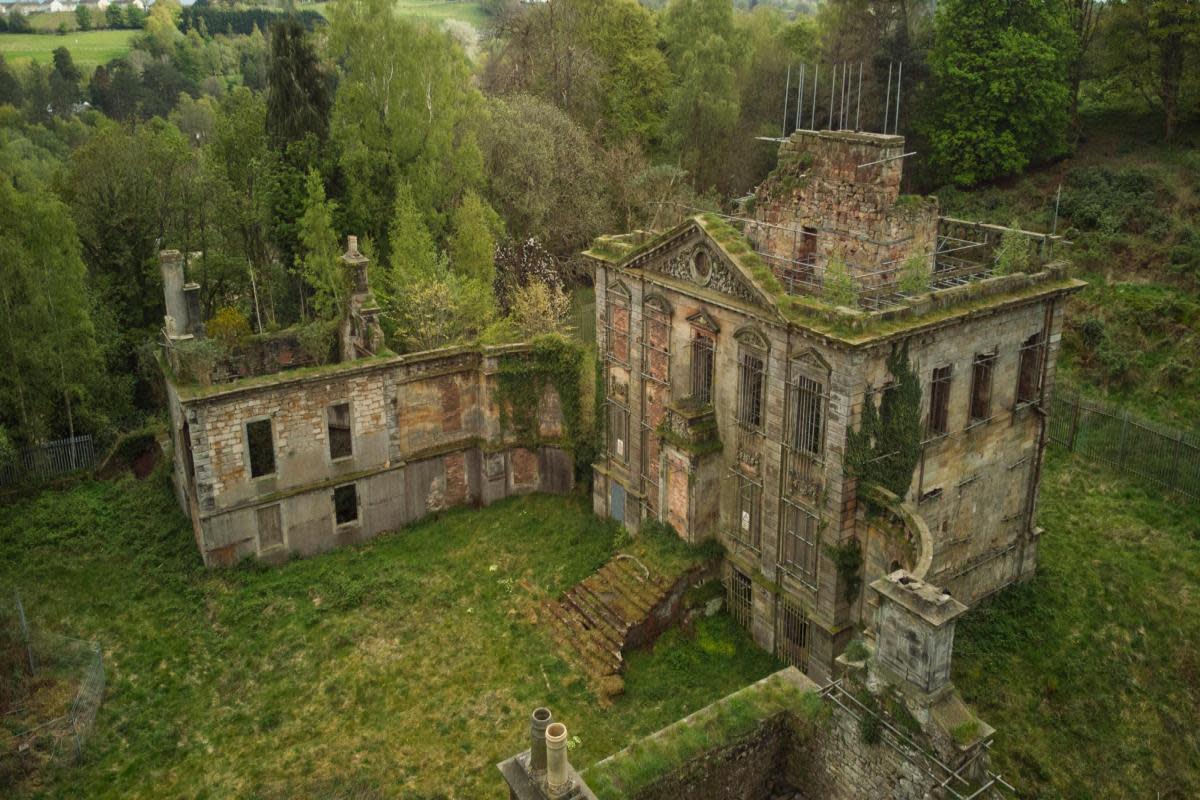
The ornate stonework is crumbling, plants sprout from crevices and scaffolding is all that keeps one of Britain’s most endangered buildings upright.
But now campaigners who have strived for more than 50 years to save historic Mavisbank near Edinburgh have learned it has been saved - at the last gasp.
Derelict and in a highly perilous state following a devastating fire, confusion over who owned the Category A-listed architectural masterpiece had seen it deteriorate for decades.
Once a setting for brilliant minds of the Scottish Enlightenment, all the remained was a shell propped up by scaffolding and surrounded by ‘keep out’ signs.
Now amid mounting fears it would either fall down or face demolition, the charity bidding to save the architectural treasure has been granted £5.3million from the National Heritage Memorial Fund to rescue it.
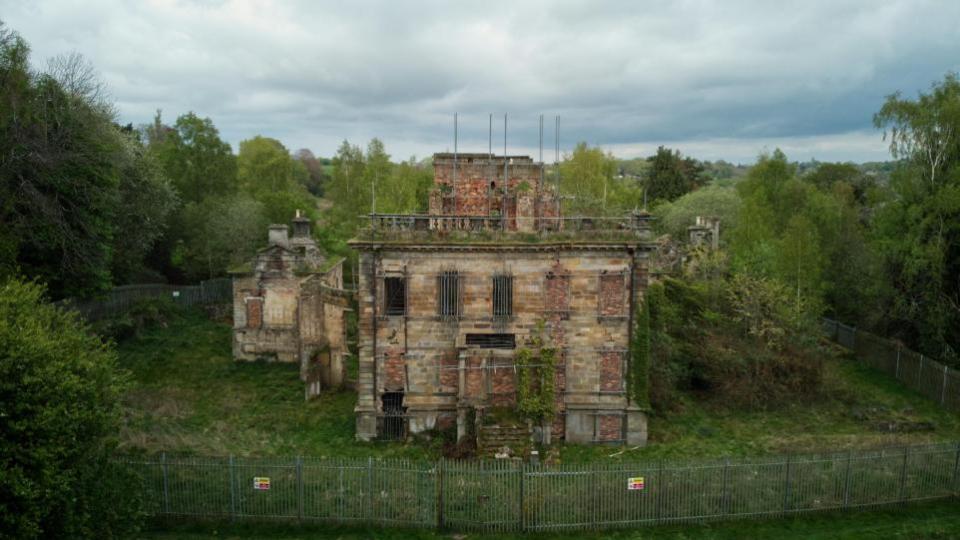
Damaged by fire and derelict, Mavisbank was at risk of being lost forever (Image: Rob McDougall)The news paves the way for a new future for the 300-year-old villa near Loanhead in Midlothian, the first of its kind and designed by Scotland’s pioneering 18th century architect, William Adam.
The Landmark Trust, which specialises in rescuing precious but deteriorating buildings, says funding has arrived at the 11th hour and means they can begin crucial work to halt its deterioration and stabilise it.
Once the building is secured, a further £7million will have to be raised to turn what is currently a mere shell to how it would have looked in its 18th century prime.
That will involve teams of skilled craftspeople working from thousands of architectural documents which provide fine detail of the property’s internal features, including ornate plasterwork, wood panels and even paint colours.
Once complete, visitors to the property will be able to almost step back in time to experience its grand rooms and features as they would have been in the days of its owner, Sir James Clerk of Penicuik.
A signatory to the Act of Union, Clerk was a leading figure in Scottish society and often entertained key Enlightenment personalities at the Loanhead country home which he’d worked on with Adam, the figurehead of the famous architectural dynasty.
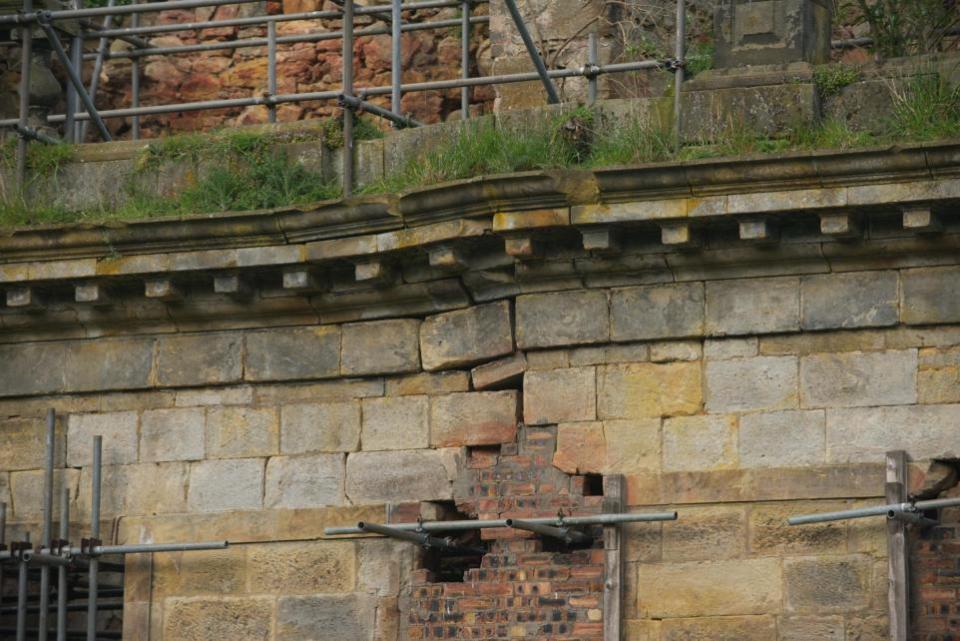
Designed by William Adam, Mavisbank's exterior had been left to crumble (Image: Rob McDougall)
Clerk took influence from the properties and lifestyles of the people he encountered on his European travels to work with Adam on the vision for his country residence.
Mavisbank was built in 1723, in a pioneering neo-Classical style which William Adam’s son Robert Adam and others would develop for Edinburgh’s New Town a generation later.
Set in 70 acres with a walled garden, canal and Palladian influences, it would become a blueprint for countless other country villas across the country.
In the 19th century Mavisbank became a ground-breaking hospital where reforming Doctor John Batty Tuke developed compassionate approaches to mental illness, including through exercise and gardening.
The asylum’s closure saw Mavisbank enter a grim period when its once grand forecourt was used to store scrap vehicles.
The fire and mystery over its ownership led to it coming within a hair’s breadth of being demolished in the mid-1980s, sparking a round-the-clock vigil by volunteers striving to halt the bulldozers.
Since then, emergency holding scaffolding erected by Historic Environment Scotland has kept it propped up while numerous attempts to raise funds to repair it flopped.
Mavisbank featured in the final of 2003 BBC2 TV series ‘Restoration’ presented by Griff Rhys Jones, only to fail to scoop the £1million funding prize.
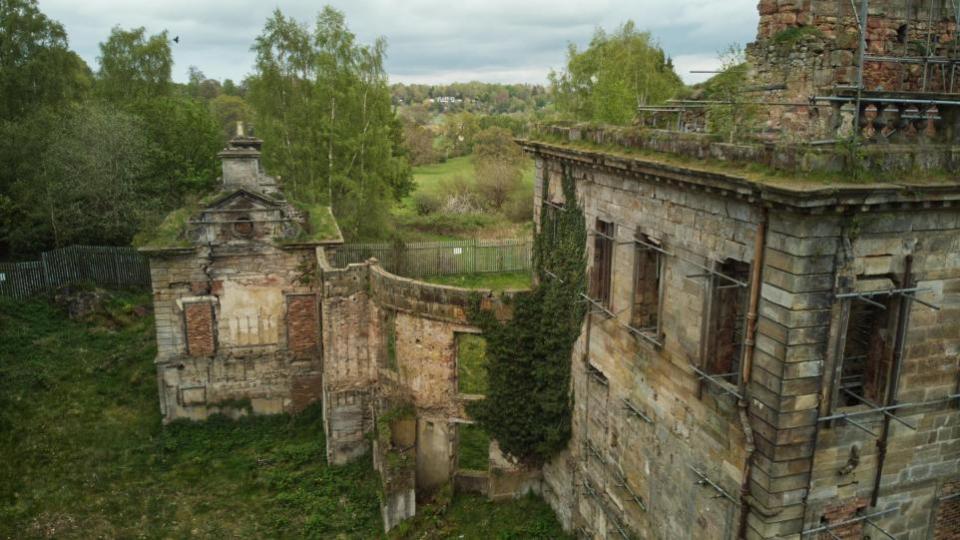
Fire and neglect have left Mavisbank a shell of a once fine country villa (Image: Rob McDougall)
The Landmark Trust has worked with Midlothian Council, Historic Environment Scotland, the Mavisbank Trust and others to identify a viable solution for almost a decade.
It plans to open part of the reconstructed building for self-catering holidays, with other areas made available for community use.
The restoration will involve some of the country’s most talented craftspeople working alongside a new generation, passing on heritage building skills.
First, however, the charity and its counterparts are to embark on a Compulsory Purchase of the property, a legal process expected to take at least a year.
Dr Anna Keay, Director of the Landmark Trust, said the grant award is a “once in a lifetime moment”.
“Mavisbank has hung by little more than a thread for so long, with demolition seriously contemplated on more than one occasion.
“Experts are clear that if something couldn’t happen right now, then the building would not only continue to fall down but it would probably have to be demolished for safety reasons.”
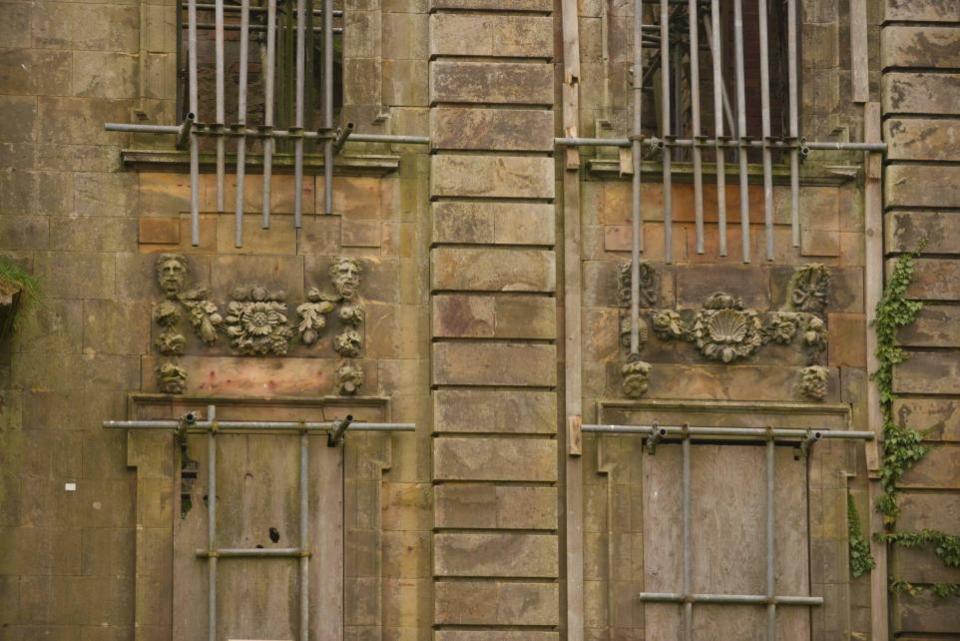
The William Adam designed building features ornate stonework and carvings (Image: Rob McDougall)
She described Mavisbank as “the equivalent of a painting by Henry Raeburn or Allan Ramsay” and “an amazing work of art”.
“It was a vision of a new way that buildings would look, how people would live and what culture would be like; European and outward- looking.
“When the New Town was being built a generation later, it looked like it did because of its influence.”
The National Heritage Memorial Fund grant of £5.3m is the major enabler in a funding package which also includes £1.338m raised from various other sources, including the Landmark Trust’s own funds.
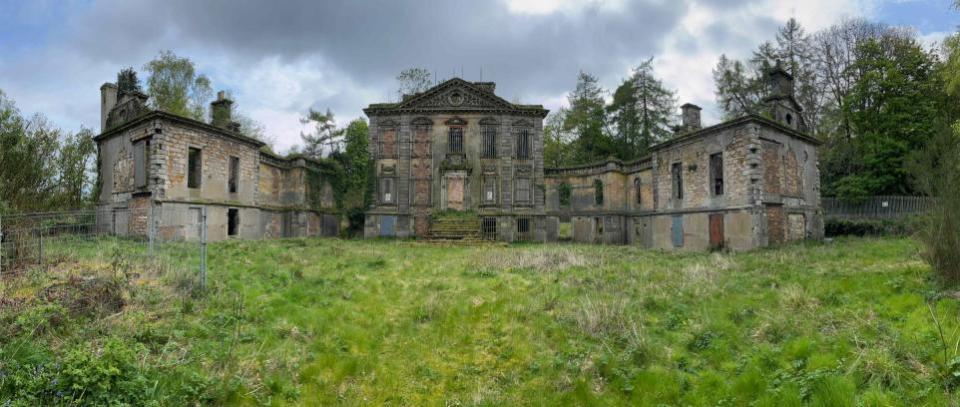
Mavisbank was the first villa of its kind and would become a blueprint for countless other properties (Image: Rob McDougall)
The charity needs to raise a further £1.162m – the last 15% - to complete the first phase of the project.
The second phase, which will involve faithfully reconstructing the building’s interiors, is expected to cost a further £7 million.
Earlier this week, The Herald told how local group the Mavisbank Trust, which has created digital images of the property's rooms using its vast archives, had by chance spotted a dining table linked to the house for sale at auction.
Having secured it, the Trust said they had hopes that it might one day be returned to the restored property as a feature of its grand dining room.
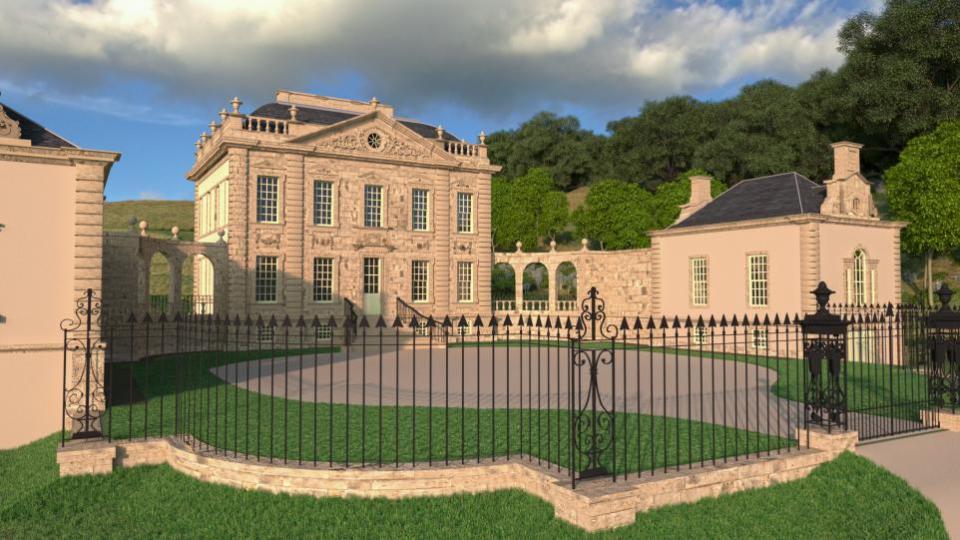
The Mavisbank Trust used extensive archives to create a digital reconstruction of Mavisbank (Image: The Mavisbank Trust)
The building’s revival is likely to take around five years.
“The vision is to return Mavisbank to when William Adam and James Clerk finished work on it.
“It’s not a place where we are planning to do a contemporary glass wing or drop a pod on it. It’s about reinstating all the wonderful design and carvings and interiors that date back to their day.
“There is an incredible archive, so we know what it was like.
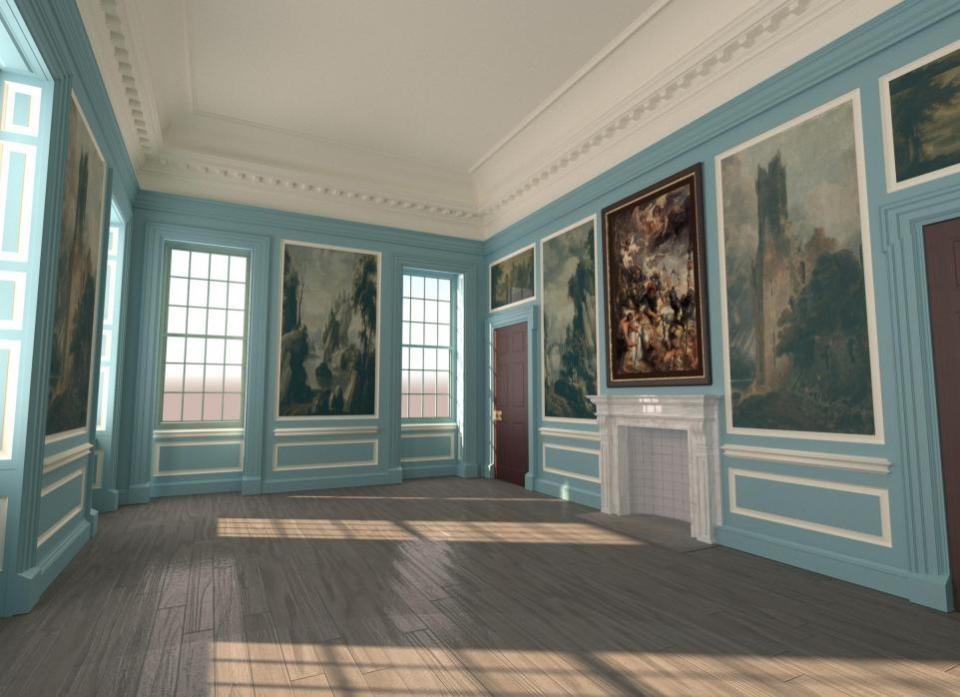
Mavisbank archives were used to create digital images to show how the dining room once looked (Image: The Mavisbank Trust)
“The main rooms and principal rooms will be like going back in time. People will be able to stay for short breaks, eat in the dining room and sleep under the beautiful plaster ceilings.”
Anna Eavis, Chair of the National Heritage Memorial Fund panel, said: “Mavisbank House is a building of outstanding importance to Scottish and UK national heritage and the National Heritage Memorial Fund is delighted to make this award to save it from being lost forever.
“This funding will enable the Landmark Trust to acquire Mavisbank House and safeguard the historic fabric of the Category A building, laying the foundations for a sustainable and brighter future.”

 Yahoo News
Yahoo News 
